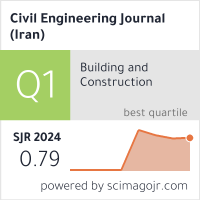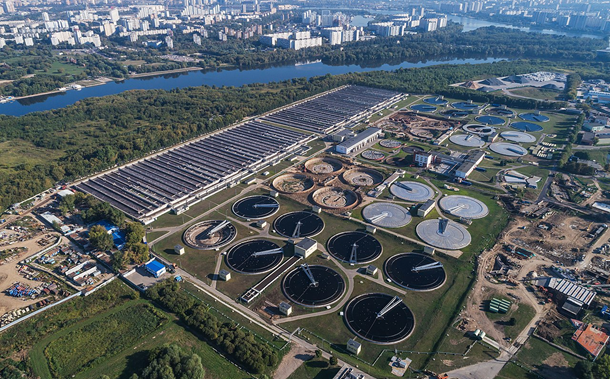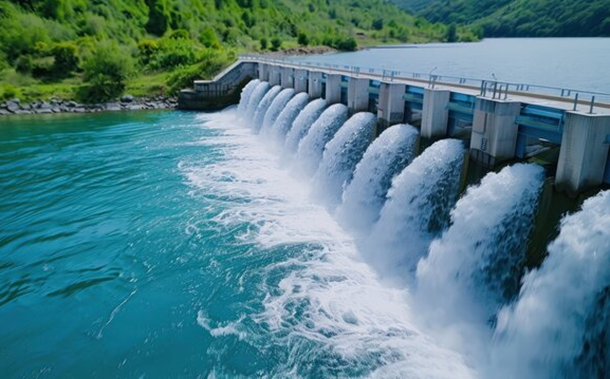Mechanical Properties of Sustainable Base Course Binder Incorporating GGBFS and Spent FCC Catalyst
Downloads
Doi:10.28991/CEJ-2025-011-03-012
Full Text:PDF
Downloads
[2] Balaguera, A., Carvajal, G. I., Albertí, J., & Fullana-i-Palmer, P. (2018). Life cycle assessment of road construction alternative materials: A literature review. Resources, Conservation and Recycling, 132, 37–48. doi:10.1016/j.resconrec.2018.01.003.
[3] Plati, C. (2019). Sustainability factors in pavement materials, design, and preservation strategies: A literature review. Construction and Building Materials, 211, 539–555. doi:10.1016/j.conbuildmat.2019.03.242.
[4] Zhao, Z., Xiao, F., & Amirkhanian, S. (2020). Recent applications of waste solid materials in pavement engineering. Waste Management, 108, 78–105. doi:10.1016/j.wasman.2020.04.024.
[5] Moins, B., France, C., Van den bergh, W., & Audenaert, A. (2020). Implementing life cycle cost analysis in road engineering: A critical review on methodological framework choices. Renewable and Sustainable Energy Reviews, 133. doi:10.1016/j.rser.2020.110284.
[6] Ramírez-Vargas, J. R., Zamora-Castro, S. A., Herrera-May, A. L., Sandoval-Herazo, L. C., Salgado-Estrada, R., & Diaz-Vega, M. E. (2024). A Review of Sustainable Pavement Aggregates. Applied Sciences (Switzerland), 14(16), 7113. doi:10.3390/app14167113.
[7] Sathvik, S., Shakor, P., Hasan, S., Awuzie, B. O., Singh, A. K., Rauniyar, A., & Karakouzian, M. (2023). Evaluating the potential of geopolymer concrete as a sustainable alternative for thin white-topping pavement. Frontiers in Materials, 10. doi:10.3389/fmats.2023.1181474.
[8] Ullas, S., & Bindu, C. S. (2024). Enhancing sustainability in stabilised macadam layer: utilising locally available materials for eco-friendly drainage layers. Innovative Infrastructure Solutions, 9(9), 362. doi:10.1007/s41062-024-01682-4.
[9] ASTM C989/C989M-18a. (2022). Standard Specification for Slag Cement for Use in Concrete and Mortars. ASTM International, Pennsylvania, United States. doi:10.1520/C0989_C0989M-18A.
[10] Gholampour, A., & Ozbakkaloglu, T. (2017). Performance of sustainable concretes containing very high volume Class-F fly ash and ground granulated blast furnace slag. Journal of Cleaner Production, 162, 1407–1417. doi:10.1016/j.jclepro.2017.06.087.
[11] Ika Putra, A., & Shahin, M. A. (2019). Use of slag (with cement) for improving the performance of expansive soil of road pavement subgrade. MATEC Web of Conferences, 276, 05002. doi:10.1051/matecconf/201927605002.
[12] Amulya, S., & Ravi Shankar, A. U. (2020). Replacement of Conventional Base Course with Stabilized Lateritic Soil Using Ground Granulated Blast Furnace Slag and Alkali Solution in the Flexible Pavement Construction. Indian Geotechnical Journal, 50(2), 276–288. doi:10.1007/s40098-020-00426-2.
[13] Arulrajah, A., Mohammadinia, A., Phummiphan, I., Horpibulsuk, S., & Samingthong, W. (2016). Stabilization of Recycled Demolition Aggregates by Geopolymers comprising Calcium Carbide Residue, Fly Ash and Slag precursors. Construction and Building Materials, 114, 864–873. doi:10.1016/j.conbuildmat.2016.03.150.
[14] Ferella, F., Innocenzi, V., & Maggiore, F. (2016). Oil refining spent catalysts: A review of possible recycling technologies. Resources, Conservation and Recycling, 108, 10–20. doi:10.1016/j.resconrec.2016.01.010.
[15] Rodríguez, E. D., Bernal, S. A., Provis, J. L., Gehman, J. D., Monzó, J. M., Payá, J., & Borrachero, M. V. (2013). Geopolymers based on spent catalyst residue from a fluid catalytic cracking (FCC) process. Fuel, 109, 493–502. doi:10.1016/j.fuel.2013.02.053.
[16] Payá, J., Monzó, J., & Borrachero, M. V. (1999). Fluid catalytic cracking catalyst residue (FC3R): An excellent mineral by-product for improving early-strength development of cement mixtures. Cement and Concrete Research, 29(11), 1773–1779. doi:10.1016/S0008-8846(99)00164-7.
[17] Xue, Y., Wei, X., Zhao, H., Wang, T., & Xiao, Y. (2020). Interaction of spent FCC catalyst and asphalt binder: Rheological properties, emission of VOCs and immobilization of metals. Journal of Cleaner Production, 259. doi:10.1016/j.jclepro.2020.120830.
[18] Rasheed, S. E., Fattah, M. Y., Hassan, W. H., & Hafez, M. (2024). Strength and Durability Characteristics of Sustainable Pavement Base Course Stabilized with Cement Bypass Dust and Spent Fluid Catalytic Cracking Catalyst. Infrastructures, 9(12), 217. doi:10.3390/infrastructures9120217.
[19] ASTM D1633-17. (2017). Standard Test Methods for Compressive Strength of Molded Soil-Cement Cylinders. ASTM International, Pennsylvania, United States. doi:10.1520/D1633-17.
[20] Lim, S., & Zollinger, D. G. (2003). Estimation of the Compressive Strength and Modulus of Elasticity of Cement-Treated Aggregate Base Materials. Transportation Research Record, 1837, 30–38. doi:10.3141/1837-04.
[21] Al-Hdabi, A., Al Nageim, H., & Seton, L. (2014). Performance of gap graded cold asphalt containing cement treated filler. Construction and Building Materials, 69, 362–369. doi:10.1016/j.conbuildmat.2014.07.081.
[22] Taha, R. (2003). Evaluation of Cement Kiln Dust-Stabilized Reclaimed Asphalt Pavement Aggregate Systems in Road Bases. Transportation Research Record, II(1819), 11–17. doi:10.3141/1819b-02.
[23] ASTM C469-02e1. (2001). Standard Test Method for Static Modulus of Elasticity and Poisson's Ratio of Concrete in Compression. ASTM International, Pennsylvania, United States. doi:10.1520/C0469-02E01.
[24] Chen, J. J., Thomas, J. J., Taylor, H. F. W., & Jennings, H. M. (2004). Solubility and structure of calcium silicate hydrate. Cement and Concrete Research, 34(9), 1499–1519. doi:10.1016/j.cemconres.2004.04.034.
[25] Wolter, J. M., Schmeide, K., Huittinen, N., & Stumpf, T. (2019). CM(III) retention by calcium silicate hydrate (C-S-H) gel and secondary alteration phases in carbonate solutions with high ionic strength: A site-selective TRLFS study. Scientific Reports, 9(1), 14255. doi:10.1038/s41598-019-50402-x.
[26] Madadi, A., & Wei, J. (2022). Characterization of Calcium Silicate Hydrate Gels with Different Calcium to Silica Ratios and Polymer Modifications. Gels, 8(2), 75. doi:10.3390/gels8020075.
[27] Fan, M. X., Chen, F. X., Zhang, X. Y., Wang, R. K., & Yu, R. (2023). Effect of Ca/Si ratio on the characteristics of alkali-activated ultra-high performance concrete (A-UHPC): From hydration kinetics to microscopic structure development. Construction and Building Materials, 394. doi:10.1016/j.conbuildmat.2023.132158.
[28] Mohajerani, A., Burnett, L., Smith, J. V., Markovski, S., Rodwell, G., Rahman, M. T., Kurmus, H., Mirzababaei, M., Arulrajah, A., Horpibulsuk, S., & Maghool, F. (2020). Recycling waste rubber tyres in construction materials and associated environmental considerations: A review. Resources, Conservation and Recycling, 155. doi:10.1016/j.resconrec.2020.104679.
[29] Alemshet, D., Fayissa, B., Geremew, A., & Chala, G. (2023). Amelioration Effect of Fly Ash and Powdered Ground Steel Slag for Improving Expansive Subgrade Soil. Journal of Engineering (United Kingdom), 1652373. doi:10.1155/2023/1652373.
[30] Kumar, D., Sharma, A., & Singh, K. (2023). Towards Sustainable Stabilization: Utilizing Waste Material as Binder. IOP Conference Series: Earth and Environmental Science, 1110(1), 012002. doi:10.1088/1755-1315/1110/1/012002.
[31] Kedar, H. N., Aware, R., Repale, G., Pankaj, T., & Sangale, P. (2024). Optimizing industrial waste in road construction: a response surface methodology approach. Journal of Building Pathology and Rehabilitation, 9(1), 59. doi:10.1007/s41024-024-00419-1.
[32] Qiu, K., Zeng, G., Shu, B., & Luo, D. (2023). Study on the Performance and Solidification Mechanism of Multi-Source Solid-Waste-Based Soft Soil Solidification Materials. Materials, 16(13), 4517. doi:10.3390/ma16134517.
[33] Zhang, J., Li, C., Ding, L., & Li, J. (2021). Performance evaluation of cement stabilized recycled mixture with recycled concrete aggregate and crushed brick. Construction and Building Materials, 296. doi:10.1016/j.conbuildmat.2021.123596.
[34] Ministry of Housing and Construction. (2003). Iraqi Standard Specifications for Roads and Bridges. Ministry of Housing and Construction: Baghdad, Iraq.
[35] ASTM C1580-09. (2010). Standard Test Method for Water-Soluble Sulfate in Soil. ASTM International, Pennsylvania, United States. doi:10.1520/C1580-09.
[36] ASTM D 2974-87. (1993). Standard Test Methods for Determining the Water (Moisture) Content, Ash Content, and Organic Material of Peat and Other Organic Soils. ASTM International, Pennsylvania, United States.
[37] ASTM D4318-10. (2014). Standard Test Methods for Liquid Limit, Plastic Limit, and Plasticity Index of Soils. ASTM International, Pennsylvania, United States. doi:10.1520/D4318-10.
[38] ASTM C131/C131M-20. (2020). Standard Test Method for Resistance to Degradation of Small-Size Coarse Aggregate by Abrasion and Impact in the Los Angeles Machine. ASTM International, Pennsylvania, United States. doi:10.1520/C0131_C0131M-20.
[39] ASTM C131/C131M-14. (2014). Standard Test Method for Resistance to Degradation of Small-Size Coarse Aggregate by Abrasion and Impact in the Los Angeles Machine. ASTM International, Pennsylvania, United States. doi:10.1520/C0131_C0131M-14.
[40] ASTM D1557-12(2021). (2021). Standard Test Methods for Laboratory Compaction Characteristics of Soil Using Modified Effort (56,000 ft-lbf/ft3 (2,700 kN-m/m3)). ASTM International, Pennsylvania, United States. doi:10.1520/D1557-12R21.
[41] Torres Agredo, J., BAQUERO, E. A., & Silva, A. R. (2009). Evaluation of the pozzolanic activity of fluid catalytic cracking residue. Dyna, 76(158), 49-53.
[42] Venkatakrishanaiah, R. (2013). Experimental Study on Strength of High-Volume High Calcium Fly Ash Concrete. IOSR Journal of Mechanical and Civil Engineering, 5(4), 48–54. doi:10.9790/1684-0544854.
[43] Padmanabhan, R., Bhandari, A., Verghese, J. P., Jain, A. N., Rai, T. D., Rooby, J., & T, S. (2020). Mechanical Properties of High Calcium Flyash- GGBFS Geopolymer Paste, Mortar and the Effect of Glass Fibre Mesh on the Strength of Geopolymer Mortar Tile. International Journal of Innovative Technology and Exploring Engineering, 9(6), 722–729.
[44] Mohamed, O. A. (2019). Effect of mix constituents and curing conditions on compressive strength of sustainable self-consolidating concrete. Sustainability (Switzerland), 11(7), 2094. doi:10.3390/su11072094.
[45] Ahmed, A. (2019). Chemical Reactions in Pozzolanic Concrete. Modern Approaches on Material Science, 1(4), 128-133. doi:10.32474/mams.2019.01.000120.
[46] Sharma, A. (2019). Durability and Strength Analysis of Cement Treated Soils for Sub-Base and Base Layers of Pavement. International Journal for Research in Applied Science and Engineering Technology, 7(9), 50–57. doi:10.22214/ijraset.2019.9008.
[47] Otieno, M. O., Kabubo, C., & Gariy, Z. A. (2023). A Comparative Investigation on Cement Stabilized Lateritic Soil Admixed with Sugarcane Bagasse Ash and Saw Dust Ash for use in Road Base. International Journal of Engineering Trends and Technology, 71(5), 115–124. doi:10.14445/22315381/IJETT-V71I5P211.
[48] KC, N., Aryal, R., Joshi, B. R., & Shahi, P. B. (2023). Strength of Cement Treated Base Courses in the Flexible Pavement Design for Pathlaiya- Nijgadh Section of East-West Highway of Nepal. Himalayan Journal of Applied Science and Engineering, 4(1), 52–61. doi:10.3126/hijase.v4i1.56870.
[49] Elyasigorji, F., Farajiani, F., Hajipour Manjili, M., Lin, Q., Elyasigorji, S., Farhangi, V., & Tabatabai, H. (2023). Comprehensive Review of Direct and Indirect Pozzolanic Reactivity Testing Methods. Buildings, 13(11), 2789. doi:10.3390/buildings13112789.
[50] Sandybay, S., Shon, C. S., Tukaziban, A., Syzdykov, D., Orynbassarov, I., Zhang, D., & Kim, J. R. (2022). Blended Basic Oxygen Furnace (BOF) Slag with Ground Granulated Blast Furnace Slag (GGBFS) as a Pozzolanic Material. Materials Science Forum, 1053 MSF, 331–337. doi:10.4028/p-q7n2cu.
[51] Jeong, J.-Y., Jang, S.-Y., Choi, Y.-C., Jung, S.-H., & Kim, S.-I. (2015). Effects of Replacement Ratio and Fineness of GGBFS on the Hydration and Pozzolanic Reaction of High-Strength High-Volume GGBFS Blended Cement Pastes. Journal of the Korea Concrete Institute, 27(2), 115–125. doi:10.4334/jkci.2015.27.2.115.
[52] Gao, M., Dai, J., Jing, H., Ye, W., & Sesay, T. (2023). Investigation of the performance of cement-stabilized magnesium slag as a road base material. Construction and Building Materials, 403. doi:10.1016/j.conbuildmat.2023.133065.
[53] Mehta, P.K. and Monteiro, P.J.M. (2006) Concrete: Microstructure, Properties, and Materials (3rd Ed.). McGraw-Hill, New York, United States.
[54] Shi, X., Mukhopadhyay, A., Zollinger, D., & Grasley, Z. (2019). Economic input-output life cycle assessment of concrete pavement containing recycled concrete aggregate. Journal of Cleaner Production, 225, 414–425. doi:10.1016/j.jclepro.2019.03.288.
[55] Lee, S., & Shin, S. (2019). Prediction on compressive and split tensile strengths of GGBFS/FA based GPC. Materials, 12(24), 4198. doi:10.3390/MA12244198.
[56] Silva, L. A., Nahime, B. O., Lima, E. C., Akasaki, J. L., & Reis, I. C. (2020). XRD investigation of cement pastes incorporating concrete floor polishing waste. Ceramica, 66(380), 373–378. doi:10.1590/0366-69132020663802956.
[57] Amulya, S., & Ravi Shankar, A. U. (2020). Use of Stabilized Lateritic and Black Cotton Soils as a Base Course Replacing Conventional Granular Layer in Flexible Pavement. International Journal of Geosynthetics and Ground Engineering, 6(1), 5. doi:10.1007/s40891-020-0184-8.
- Authors retain all copyrights. It is noticeable that authors will not be forced to sign any copyright transfer agreements.
- This work (including HTML and PDF Files) is licensed under a Creative Commons Attribution 4.0 International License.![]()















